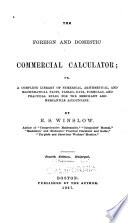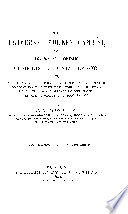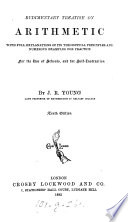 | Ezra S. Winslow - Business mathematics - 1867 - 232 pages
...these multiplied together for a product. It has also been seen that a fraction is divided by a fraction by multiplying the numerator of the dividend by the denominator of the divisor, for the numerator of the quotient, and the denominator of the dividend by the numerator of... | |
 | Ezra S. Winslow - Business mathematics - 1872 - 256 pages
...these multiplied together for a product. It has also been seen that a fraction is divided by a fraction by multiplying the numerator of the dividend by the denominator of the divisor, for the numerator of the quotient, and the denominator of the dividend by the numerator of... | |
 | Josiah Rhinehart Sypher - Teaching - 1872 - 340 pages
...divided by a fraction by multiplying the denominator of the dividend by the numerator of the divisor, and by multiplying the numerator of the dividend by the denominator of the divisor. Of course, in all cases in which the numerator and denominator of the dividend are divisible,... | |
 | Joseph Ray - Arithmetic - 1866 - 212 pages
...1 J. CONCLUSION. — Therefore, the quotient of | -j- § is | = 1 J. This quotient may be obtained by multiplying the numerator of the dividend by the denominator of the divisor for the numerator of the quotient, and the denominator of the dividend by the numerator of... | |
 | Josiah Rhinehart Sypher - History - 1872 - 336 pages
...divided by a fraction by multiplying the denominator of the dividend by the numerator of the divisor, and by multiplying the numerator of the dividend by the denominator of the divisor. Of course, in all cases in which the numerator and denominator of the dividend are divisible,... | |
 | Education - 1876 - 516 pages
...fundamental principles of simple division. By observing the result, we see it to be the same as that obtained by multiplying the numerator of the dividend by the denominator of the divisor, and the denominator of the dividend by the numerator of the divisor. Hence the rule for inverting... | |
 | Joseph Ray - Arithmetic - 1879 - 200 pages
...1 \, CONCLUSION. — Therefore, the quotient of J -s- $ is f = 1 \. These quotients may be obtained by multiplying the numerator of the dividend by the denominator of the divisor for the numerator of the quotient, and the denominator of the dividend by the numerator of... | |
 | John Radford Young - Arithmetic - 1882 - 248 pages
...quotient is Jj x 7, or •»* : you thus see, that the quotient of one fraction by another, is got by multiplying the numerator of the dividend by the denominator of the divisor, and the denominator of the dividend by the numerator of the divisor; or, which is the same... | |
 | Charles Scott Venable - Arithmetic - 1888 - 402 pages
...the numerator of the dividend by the numerator of the divisor. The result is most readily obtained by multiplying the numerator of the dividend by the denominator of the divisor ; and the denominator of the dividend by the numerator of the divisor, and then dividing; or,... | |
 | Charles Scott Venable - Arithmetic - 1888 - 242 pages
...iVs, giving & and ft ; i9^ contains -iV as often as 9 contains 8, or f = 1J times. The 9 was obtained by multiplying the numerator of the dividend by the denominator of the divisor ; and the eight, by multiplying the denominator of the dividend by the numerator of the divisor.... | |
| |